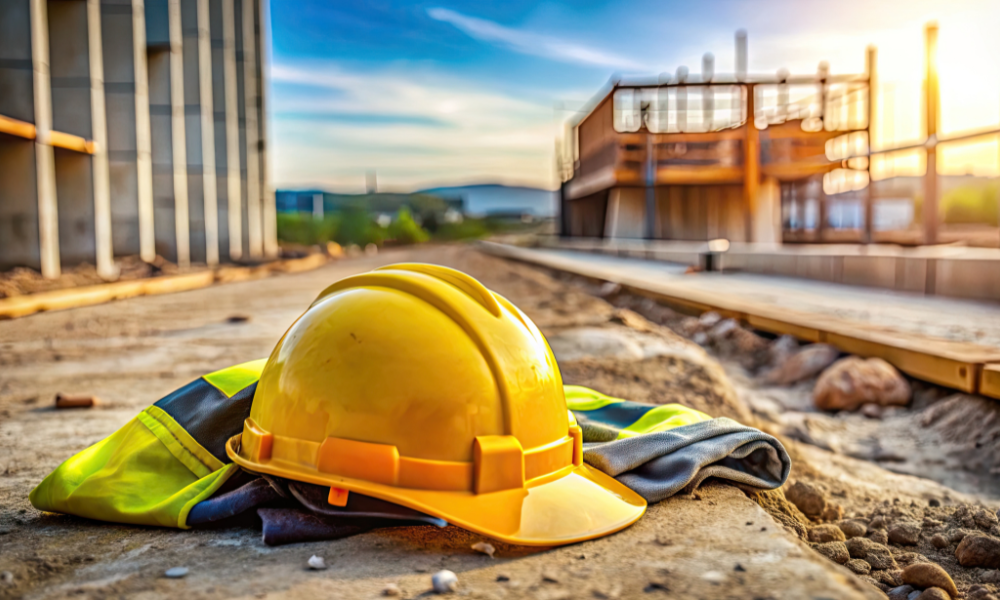Keeping the workspace clean and tidy is key to worker safety

When we think of workplace health and safety, we typically think of the big things such as proper PPE, a joint health and safety committee and other. And these are very important – but it’s also essential to maintain a good order in the workspace.
As Canada starts to open up, many businesses and organizations are starting to put together reopening plans. With many of us still working from home over the last year or so, our understanding of an actual, physical workspace may be a tad rusty.
But good housekeeping is essential for a fully functioning – and safe – workplace. And, in fact, some of these bigger incidents could probably be caused by poor housekeeping.
Furthermore, though many employees are still teleworking, some of these tips would not be remiss in the home office either.
Workplace Safety and Prevention Services (WSPS) says that good housekeeping has a number of advantages: it improves productivity by having the rights tools and material easy to find; improves a company’s image; helps organizations effectively manage their space and inventory; and of course, improves safety outcomes.
1. Keep work areas clean
A basic – but an important one, especially amid COVID-19. Make sure to keep all areas of the workplace clean and sanitized, especially including communal areas such as washrooms or kitchens, and increase sanitization of high-touch surfaces to prevent the spread of the virus. Employees should also ensure that they keep their desk areas clean, and increase sanitization of surfaces such as keyboards or phones which tend to see a lot of hand traffic during the day.
2. Materials Storage
The Canadian Centre for Occupational Health and Safety (CCOHS) shared a few tips on how to effectively store materials. These include keeping oily rags in metal containers (to avoid fire hazards); ensuring that boxes, drums and piles are located on a firm foundation and properly stacked; and bundling hoses and cables when they are not in use.
3. Hazardous material disposal
Again, within the context of COVID-19 this is even more important. There are a number of ways to manage hazardous waste in the workplace – by working with a waste processing company for example. During the pandemic, businesses and organizations should also ensure that their employees are adequately and safely disposing of their PPE (respirators, masks, gloves, etc.).
4. Hazard reporting
In the same vein, all businesses and organizations should come up with an effective hazard reporting system and ensure that all employees are up-to-date and knowledgeable by, for example, posting signs in communal areas (in multiple languages so that all employees are catered to).
In addition, when hazards are reported (such as uneven boards or burnt-out lights), they should be fixed immediately or without any delay so as to avoid creating any unnecessary workplace health and safety hazards.
5. Review legal policy updates
Keep up-to-date with all legal requirements. For example, the Workplace Hazardous Materials Information System (WHMIS), which was updated in 2015. WHMIS regulates the identification and labeling of hazardous materials in the workplace. Requirements may change from province to province (though WHMIS is federally regulated) so this is something to keep in mind.
6. Spill procedures
The CCOHS says that you should clean up spills as soon as possible according to the proper procedures. Furthermore, it is essential to use the adequate PPE when necessary (such as gloves, face masks or eye goggles).
7. Minimize fire hazards
The CCOHS also says that to minimize fire hazards (which are present in a number of workplaces), businesses and organizations should keep workplaces free of accumulated combustible materials and waste. In parallel, companies should also ensure that they have an actionable fire safety and evacuation plan.
8. Keep exits and entrances clear
Speaking of evacuation, make sure to keep exits and entrances clear for this very reason. Certainly do not pile up materials around emergency exits (or around fire extinguishers or sprinklers).
9. Stack and store items safely and properly
This one goes hand in hand with effective materials storage. Keeping track of, and having an efficient stacking and storage system, helps minimize hazards. It is also important to communicate with employees the proper ways to store items to maintain the effectiveness of the system. It could be dangerous if, for example, an employee stores certain items or chemicals together that may dangerously interact if stored incorrectly.
10. Keep floors in good condition
Slips, trips and falls are among the most common injuries in any workplace. By following the previous tips about stacking and storing, most clutter should already be kept off the floors. In addition, ensure that the floors are in good condition, so regularly clean them and look out for wear (uneven floorboards, cracks, etc.) that could be potentially hazardous to workers.
To get a start, you can use this checklist from the WSPS to help with good housekeeping.





